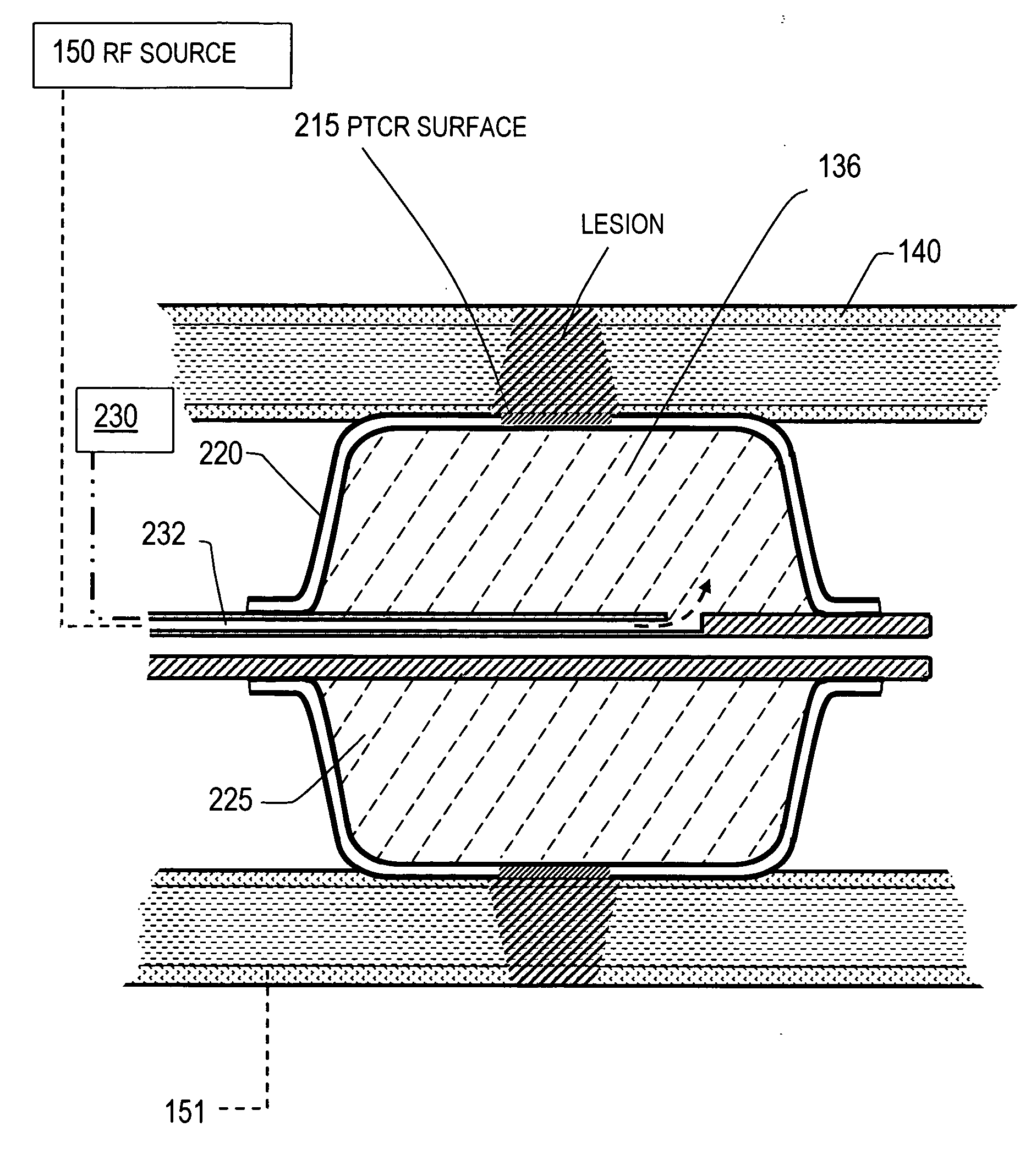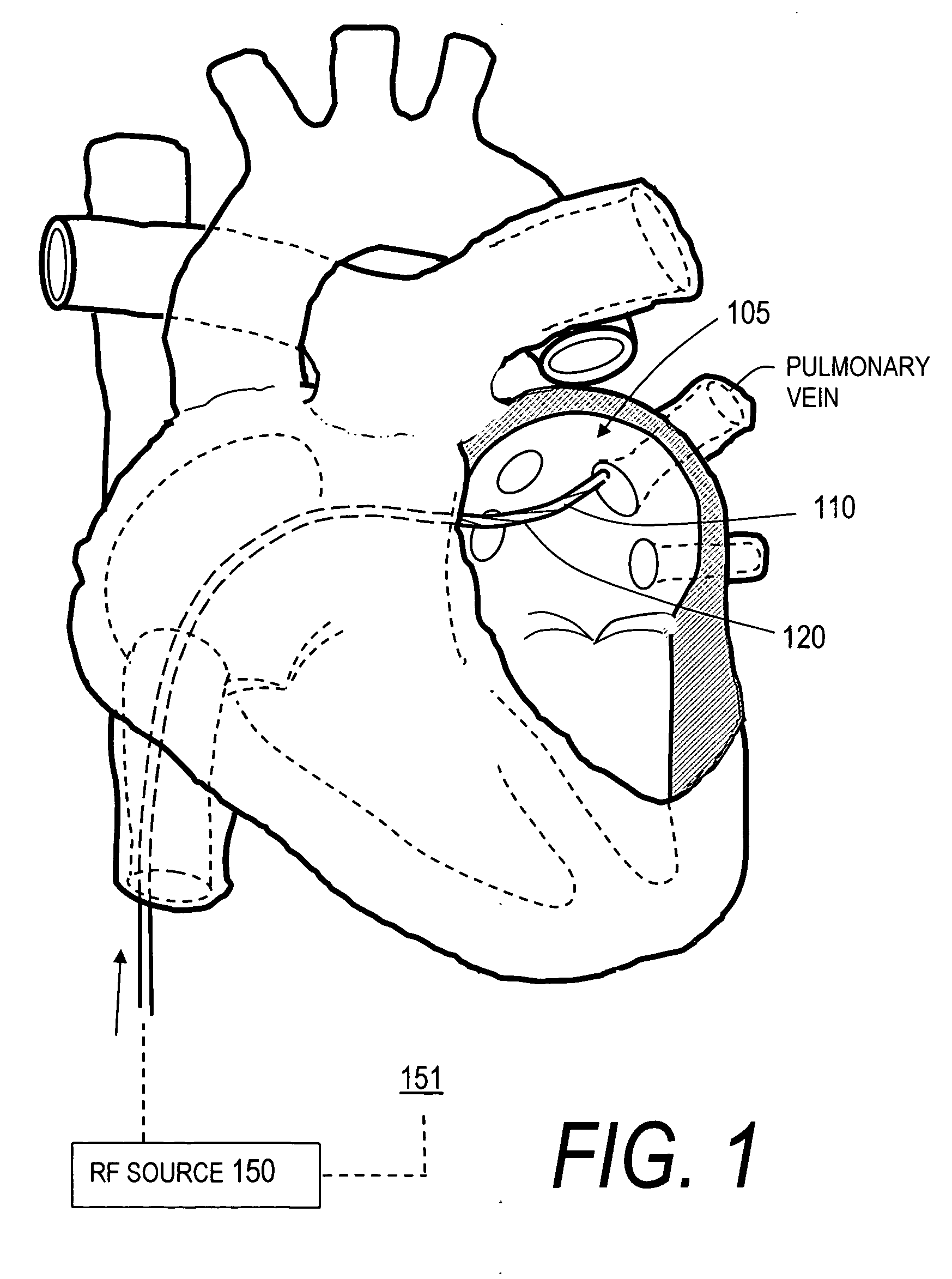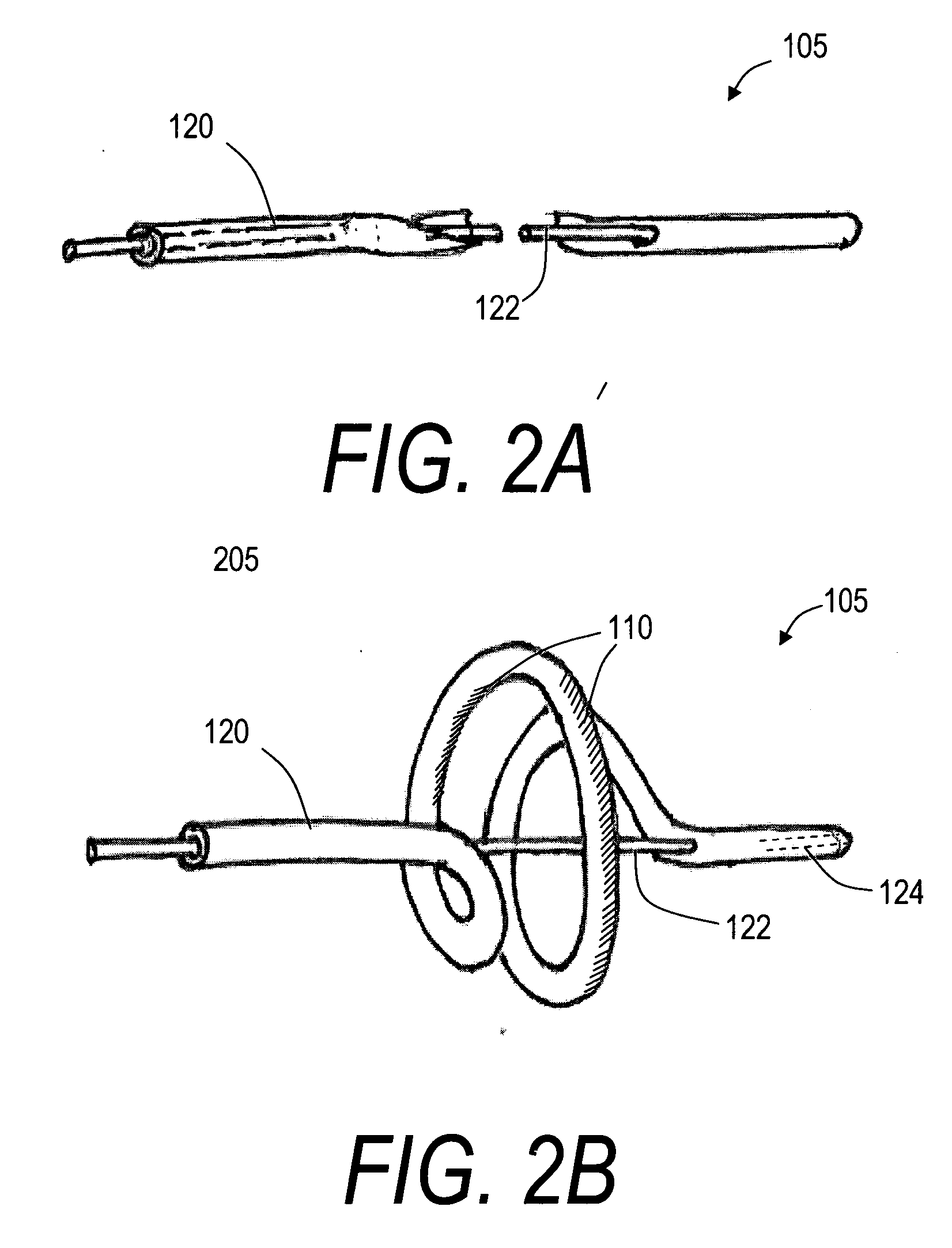Endovascular catheter and method of use
a technology of endovascular catheters and catheters, applied in the field of electrode-surgical working ends and catheters, can solve problems such as rapid heart ra
- Summary
- Abstract
- Description
- Claims
- Application Information
AI Technical Summary
Benefits of technology
Problems solved by technology
Method used
Image
Examples
Embodiment Construction
[0030] 1. Type “A” catheter with PTCR electrosurgical surface. FIG. 1 illustrates a Type “A” electrosurgical catheter 100 with a distal working end region 105 having a PTCR electrosurgical surface 110 corresponding to the invention after being guided over a guidewire to the left atrium 112. The scope of the invention extends to any endoluminal catheter that includes any electrical conductor coupled to a voltage source that has such a PTCR surface for controlling Rf current flow and the resultant ohmic heating of engaged tissue. The cross-section of the catheter sleeve 100 can be a suitable dimension, for example, from 2 to 10 French OD. The catheter can have a bore therein dimensioned to slide over a guidewire.
[0031] The PTCR electrosurgical surface 110 is a polymeric composition that is doped with conductive particles. The PTCR composition is described in more detail in the co-pending patents listed in the Section above titled CROSS-REFERENCE TO RELATED APPLICATIONS. In one embodi...
PUM
 Login to View More
Login to View More Abstract
Description
Claims
Application Information
 Login to View More
Login to View More - R&D
- Intellectual Property
- Life Sciences
- Materials
- Tech Scout
- Unparalleled Data Quality
- Higher Quality Content
- 60% Fewer Hallucinations
Browse by: Latest US Patents, China's latest patents, Technical Efficacy Thesaurus, Application Domain, Technology Topic, Popular Technical Reports.
© 2025 PatSnap. All rights reserved.Legal|Privacy policy|Modern Slavery Act Transparency Statement|Sitemap|About US| Contact US: help@patsnap.com



